My laptop runs very hot and eventually turns off or freezes – this is one of the most common complaints I have been receiving from my customer for many years. Why it’s happening? Is there an easy fix for that?
Most likely this problem is heat related. Take a look at the following picture.
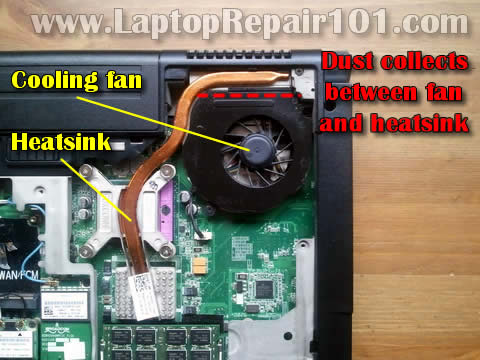
Any laptop has a cooling module which consists of heatsink and cooling fan. When laptop is working, the processor (CPU) heats up and because of that the heatsink is getting hot too. At some temperature level, the fan kicks in and cools down the heatsink.
The problem starts when the laptop cooling module collects too much dust inside. Usually dust collects between the fan and heatsink. Dust clogs the heatsink and kills normal airflow inside the cooling module. Eventually, the processor gets very hot and the laptop turns off unexpectedly or freezes. This problem can be fixed by cleaning the laptop cooling module.
Cleaning laptop cooling module.Some laptops give you an easy access to the heatsink and fan. In laptops like that you can access the cooling module through the bottom cover.
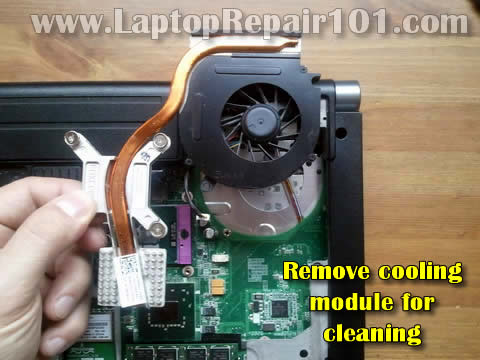
In my example I had to remove the cooling module. Otherwise, I wouldn’t be able to remove the fan and access the heatsink. In some laptops you can remove the fan without separating the heatsink from the CPU.
After I removed the fan, I found a thick layer of dust inside the heatsink. Cleaning the heatsink should fix any heat related problems.
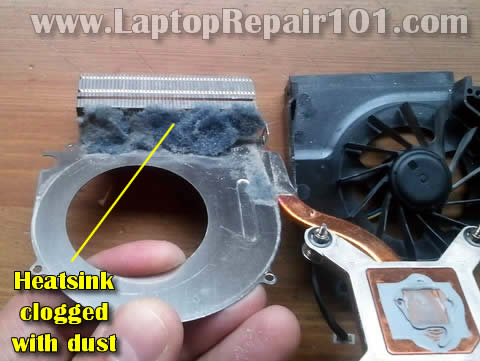
Apply thermal paste on the processor.If thermal paste on the processor dried out, you should replace it with fresh thermal paste.
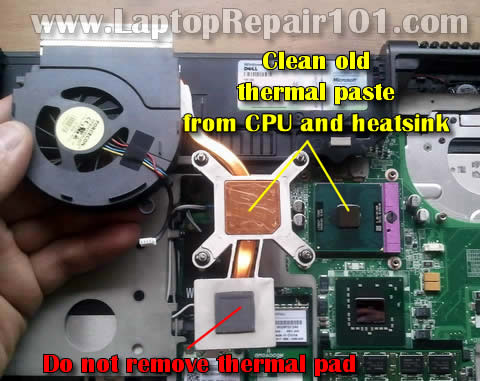
Remove old thermal paste from the processor and heatsink using alcohol swab.
WARNING: In some laptops the heatsink also covers the graphics chip. The part of the heatsink which covers the graphics chip might have thermal pad on it instead of regular thermal paste. Do not replace thermal pad with thermal paste! Do not apply thermal paste on the thermal pad! Just leave thermal pad alone and apply thermal paste only on the processor.
I usually use Shin-Etsu thermal paste which is relatively cheap and performs well.
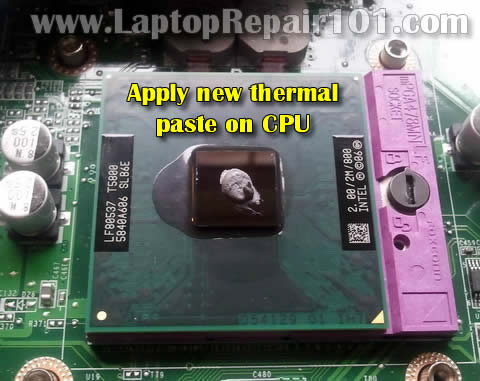
After applying new thermal paste, install the heatsink and fan back into the laptop. Do not forget to connect the fan cable to the motherboard!
What if cooling module cannot be accessed easily?In some laptops the cooling module is buried deep inside the case and cannot be easily accessed and removed. In order to remove the cooling module it’s necessary to disassemble the whole laptop but it’s only for experienced users.
In laptops like that you can use the following technique:
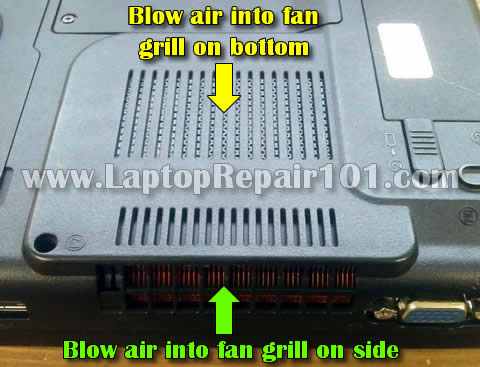
Buy a can of computer compressed air.
1. Blow air into the fan grill on the bottom of the laptop.
2. Blow air into the grill on the side of the laptop.
Switch direction a few times until all dust is gone. Most likely this quick cleaning will fix your laptop overheating problem.


Very informative blog! Keep it updated.
ReplyDeletethanks a lot to blogger.
CPU Cooler Heatsink